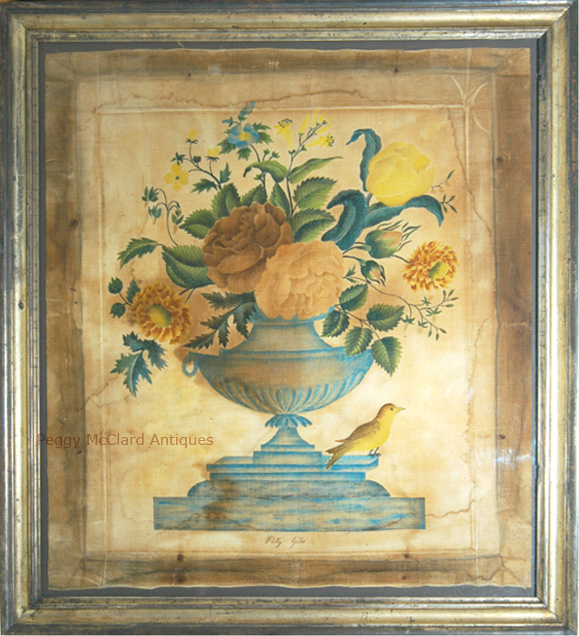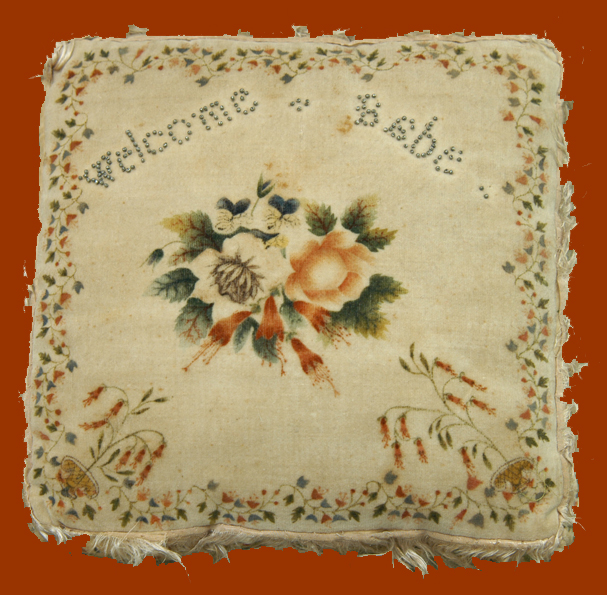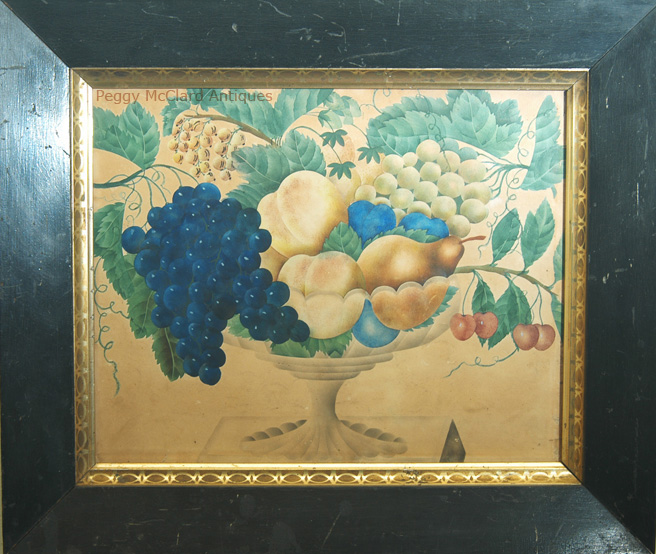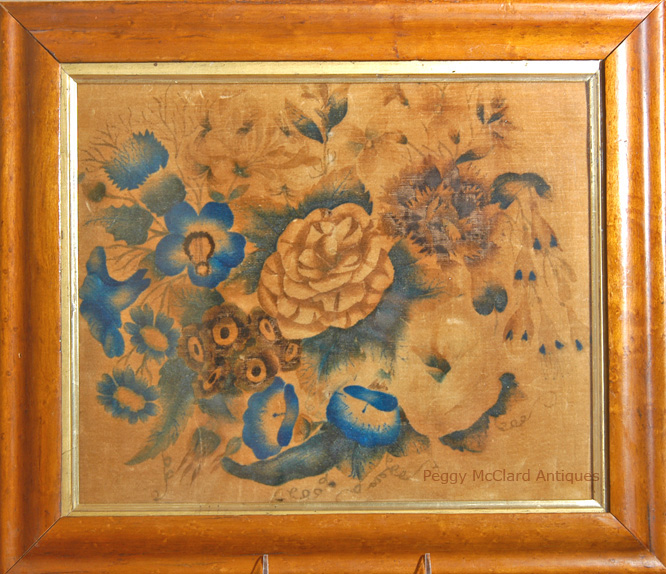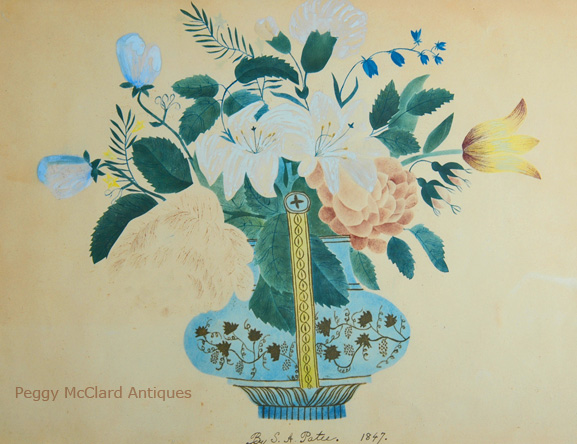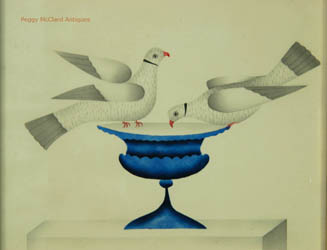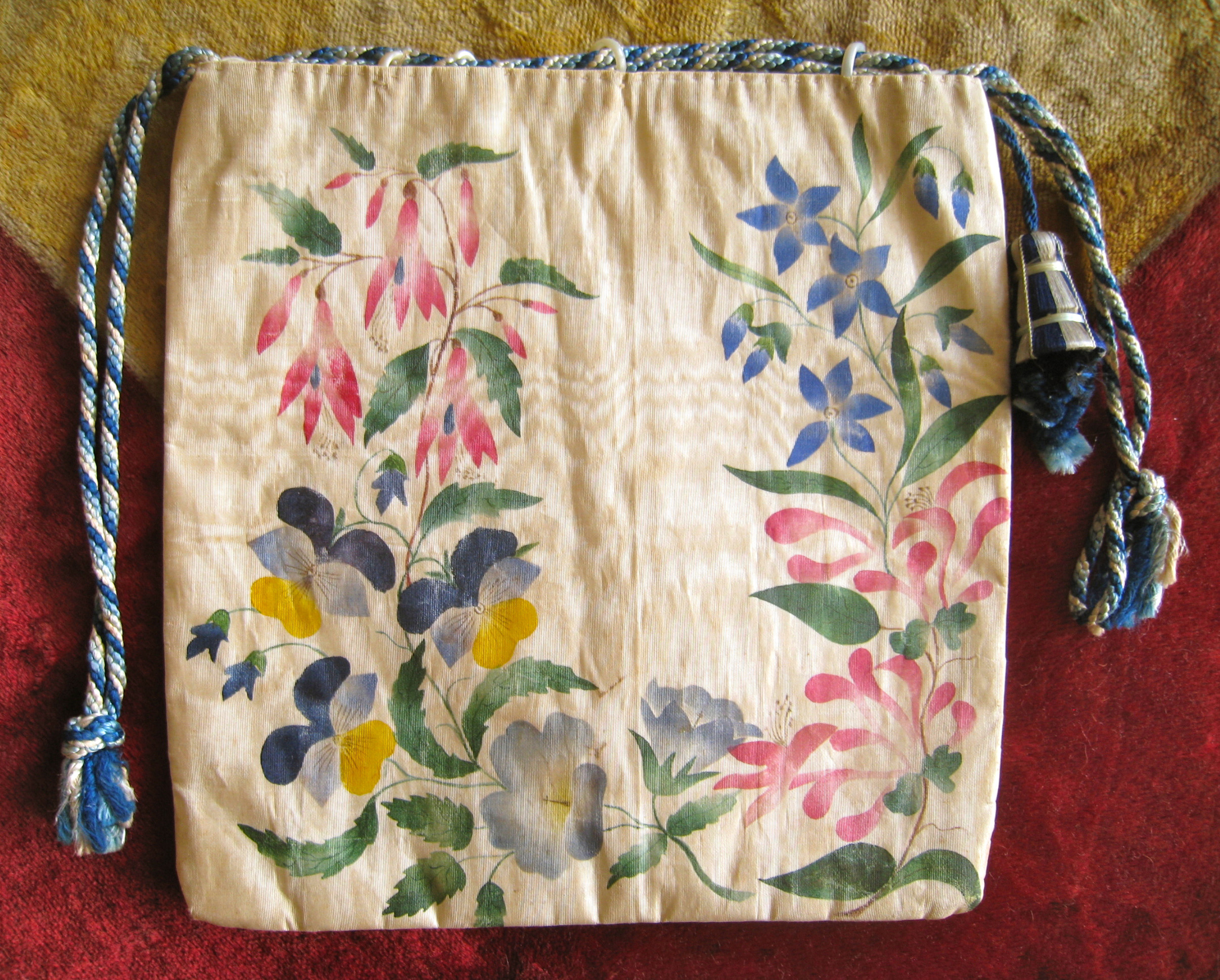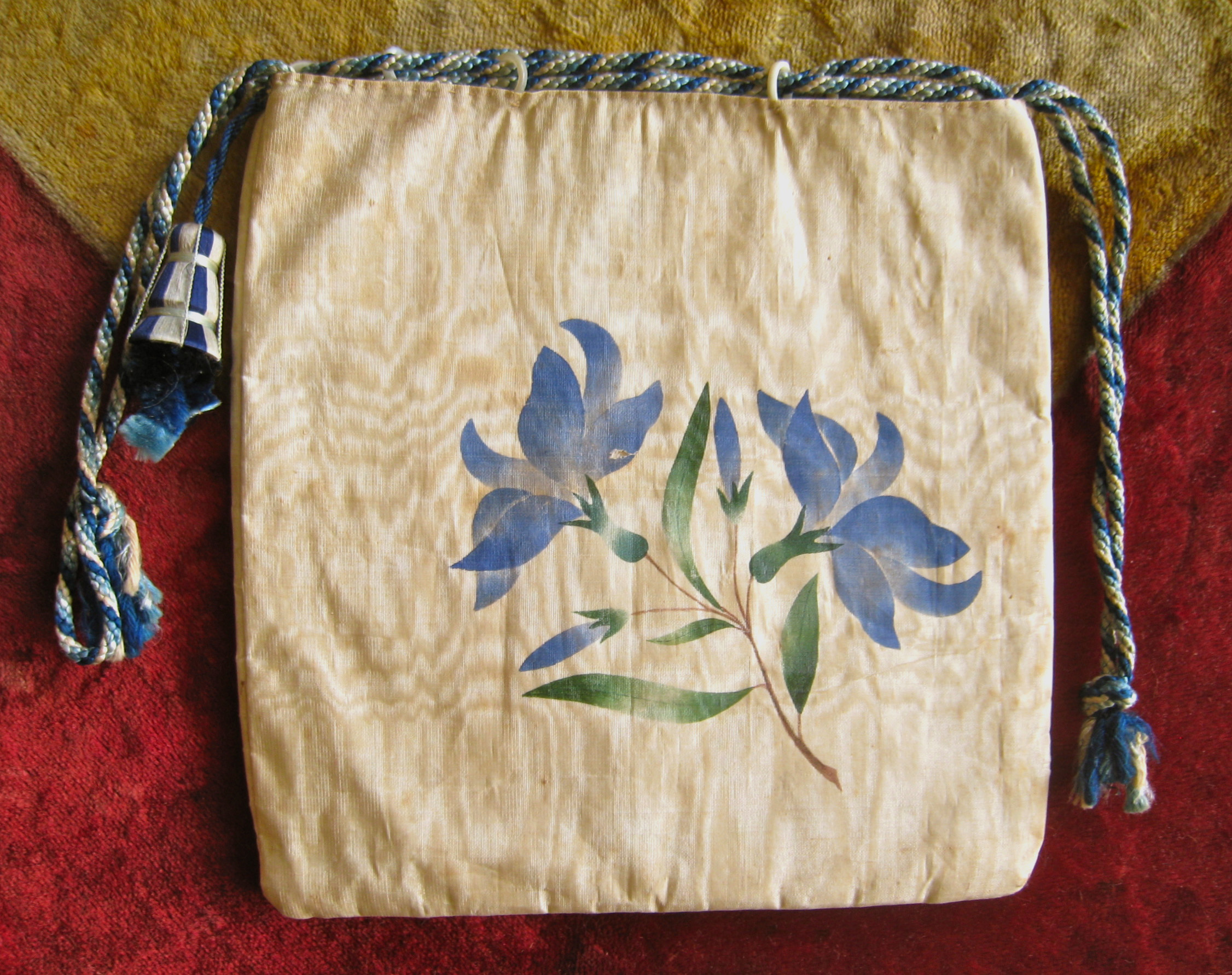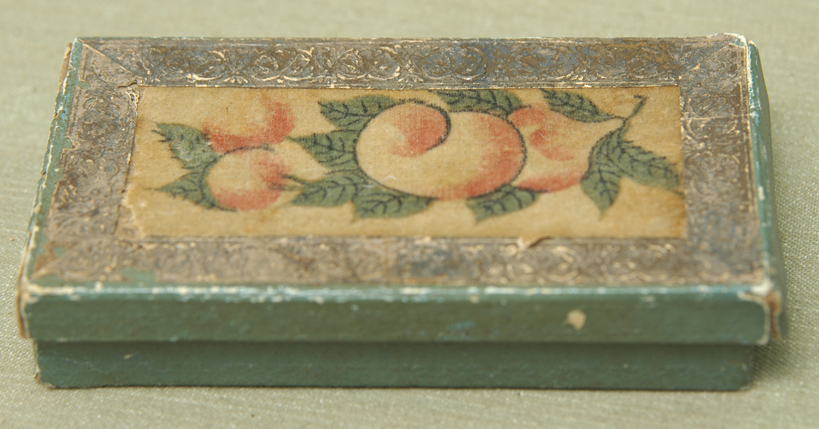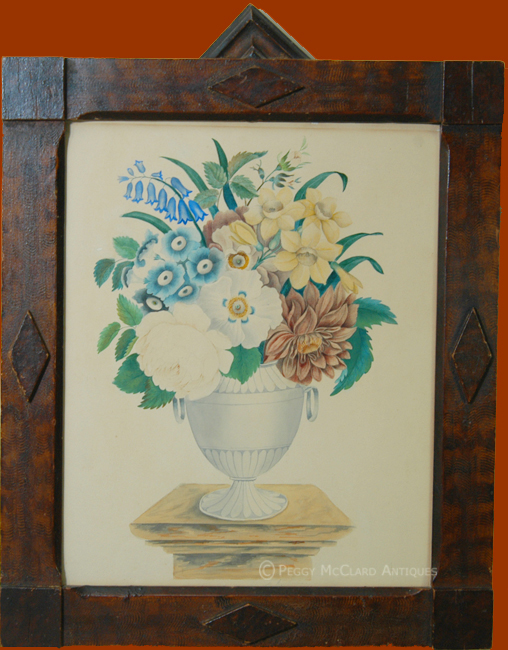Just for Fun
Theorem Painting in America
By the late 18th and early 19th centuries, young girls were attending school academies where they were taught subjects thought "proper" for young women in society. These subjects included a wide-array of arts such as needlework and painting. As the 19th century bloomed, theorem painting, also known as Oriental or Poonah painting became popular in the burgeoning America. Theorem allowed young girls to design and paint still life compositions by using a group of stencils which could be laid upon velvet, cotton, silk, satin, or more rarely, paper. Once the stencil grouping was complete, the young lady could paint each individual component inside each stencil with depth and toning not before achieved in America by the use of stencils. Before the introduction of theorem painting, stencils were used primarily for wall and floor designs. The use of stencils for painting allowed schoolgirls and young wives to make "fancy pieces" for their own homes as well as gifting to friends. The painting teacher would trace designs onto drawing paper that had been coated on both sides with linseed oil to make it transparent and then varnished so that the "horn paper" was stiff and the paint would not soak through. The instructor would then cut the design stencil with a pen knife. Students could pick from the teacher's stencils, arranging them on their own backing (velvet, cotton, silk, satin, or, more rarely, paper) to build her own composition. The stencils would then be weighted down and paint carefully applied stencil-by-stencil to produce a still life or sometimes even more elaborate scenes such as mourning or Classical-genre paintings. The final painting was usually embellished with some hand-painting, even if just a few tendrils coming from grapevines. While most theorems were meant to be framed, the painting technique was also used to decorate pincushions, purses, belts, table and bed covers. Very rarely, one finds fancy dresses decorated with theorem painting. These 19th century women artists were very serious about their theorem painting. A lady's painting portfolio might include study notes, color samples and practice sheets, colored prints for use as models, a large number of stencils, detailed tracings with notes about colors used, drawing paper, horn paper, and tracing paper.
-
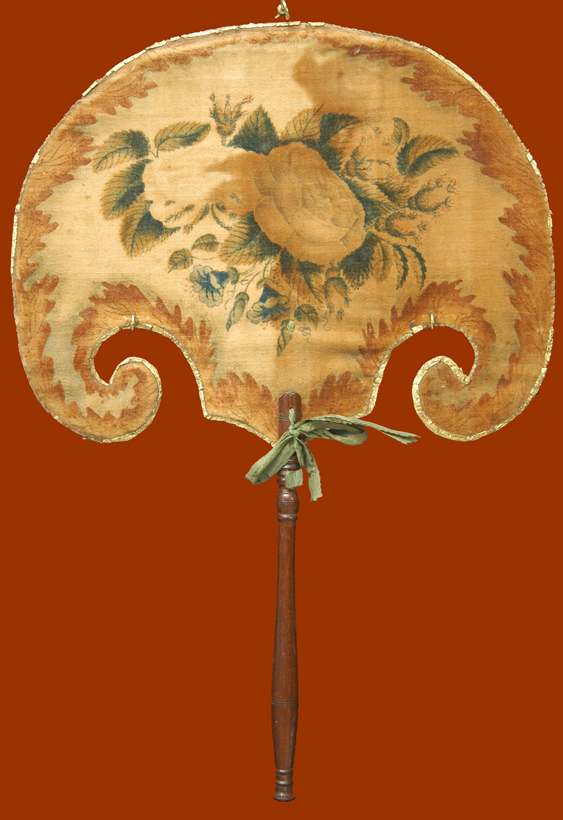 Rare Fire-Screen Fan
Rare Fire-Screen Fan
Theorems are very desirable and very dear in value. Collectors must be cautioned to learn the difference between 19th century theorems and 20th century reproductions. A great surge in interest in theorems took place in the 1980s with the success of David Ellinger and Bill Rank, two Pennsylvania artists. Theorem classes were common and students were taught to make their designs look like 19th century pieces and to tea-dye the completed pieces for age. I made a few myself for my own pleasure (signed and dated with the correct date). Visit museums and look at all the theorems you can find. Learn the difference between the subtle coloring of 19th century theorems (colors made subtle by the natural aging and fading process -- as 19th century Americans loved riotous coloring) and the brighter shades of modern paints. Look for the overly curly tendrils on 20th century theorems. Look at where 19th century theorems are signed and the look of a period inscription versus the location and look of modern signatures and inscriptions. Most 19th century theorems painted on fabric were first mounted on a wood stretcher....so look to see how it is mounted....but realize that, because wood is acidic, some early theorems may have been removed from stretchers for conservation. I try to keep theorems and samplers on the original wood stretcher but to slip a piece of acetate between the fabric and stretcher (a trick I learned from the textiles curator at Colonial Williamsburg).
References:
LeFever, Gregory, "Side by Side, Theorem Painting", Early American Life Magazine, December 2009. pdf found at http://www.gregorylefever.com/pdfs/Theorem Painting 2.pdf
Lefko, Linda Carter, "The Art of Grisaille Painting", Early American Life, March 2011. 10-21.
Lipman, Jean & Winchester, Alice, The Flowering of American Folk Art (1776-1876). Penguin Books, in Cooperation with The Whitney Museum of American Art. 1974. 92-97.
Ockenga, Starr, On Women & Friendship. Stewart, Tabori & Chang, New York. 1993. 35.
Shaw, Robert, "Academy and School Work", Expressions of Innocence: Selections from the Jane Katcher Collection of Americana, Katcher, Jane, Schorsch, David A. & Wofe, Ruth, ed. Marquand Books, Seatle, in association with Yale University Press, New Haven & London. 2007. 145-46.
Viator, Jane, "Picture Perfect", Antiques Roadshow Insider, April 2011 (pdf attached by permission of Antiques Roadshow Insider). Great article about theorem painting.
-
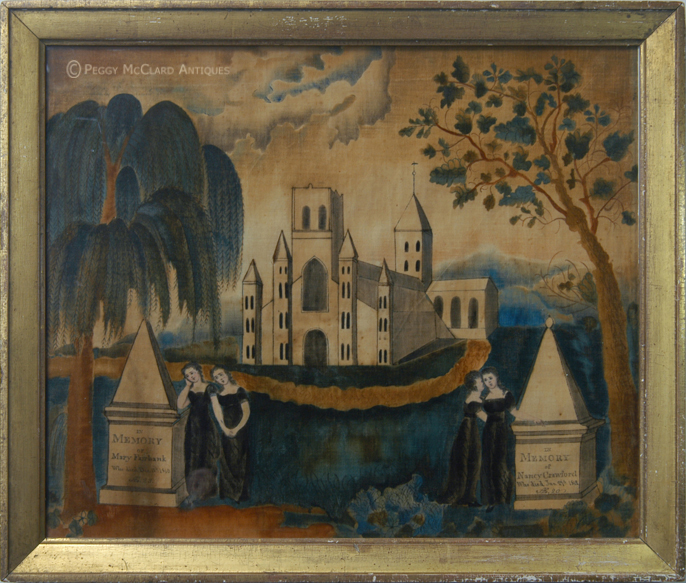 Mourning Painting Done With Combination
Mourning Painting Done With Combination
of Stencils and Free-Hand Painting
Please see the Theorems currently in inventory on the Folk Art page.

